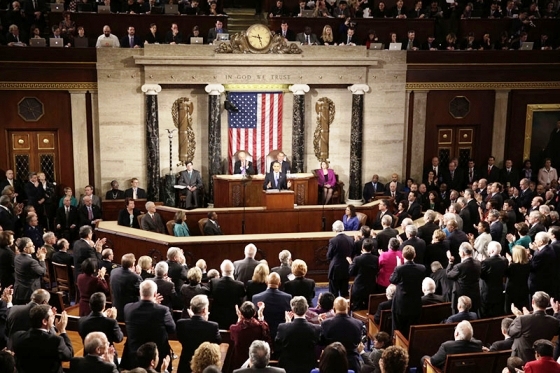At an engine component factory in Asheville, North Carolina today, President Obama outlined a plan to achieve the commitment he made in his State of the Union Address to make America a “magnet for new jobs in manufacturing.” The White House chose the setting of the Linamar Corp. factory because it recently filled an industrial site that had been vacated a few years earlier and represented the rebound that's been building in U.S. manufacturing. A half million jobs in manufacturing have been added during the past three years following a decade of decline.
President Obama announced these objectives during the State of the Union and in his remarks today:
1. Reform the tax code to encourage manufacturing investment in the U.S. Lower the tax rate for manufacturing to 25 percent from 35 percent. Expand and make permanent the research and development tax credit. Establish an “offshoring tax” that would set a minimum tax on offshore earnings.
Those are important steps. The cost of doing business in the U.S. averages 20 percent more than in most major trading partners, excluding the cost of labor. Expanding and strengthening the tax credit for research and development is also overdue. The year-to-year status of the current credit creates uncertainty for research that often requires years to develop.
2. Invest $1 billion to create 15 manufacturing innovation hubs modeled on a program launched in Ohio last year. The President announced executive action to create three such training institutes right away, and asked Congress to fund additional centers.
The objective is to encourage innovation. We’re not going to win a battle of cheap labor with foreign countries whose wages and standard of living are far below America’s. The American manufacturing worker is only going to be able to continue living with a higher wage, more benefits and greater job security if you help improve productivity. You do that with a heavy emphasis on automation – computers, software, robotics – so they can produce a quality part faster.
3. Train 2 million workers for good jobs in advanced manufacturing.
We need job prospects who can read a blueprint and run sophisticated machinery. We need to improve math, science and technology training in our public schools. We have to attract top college graduates to teaching and treat them like professionals with higher salaries.
4. Complete the Trans-Pacific Partnership and begin talks on a Trans-Atlantic Partnership for a comprehensive trade agreement with the European Union.
One of the President’s chief business accomplishments during his first term was hammering out the South Korean, Panamanian and Colombian Free Trade Agreements. That opened our nation to new markets and new customers. It’s important to re-create that success with larger trade agreements. At Marlin Steel, we now export material handling containers to 36 countries. Export work often pays better, probably 20 percent more than domestic jobs.
As the President said, the next revolution in manufacturing is happening right here in America. Let's accelerate that revolution.


.gif)

